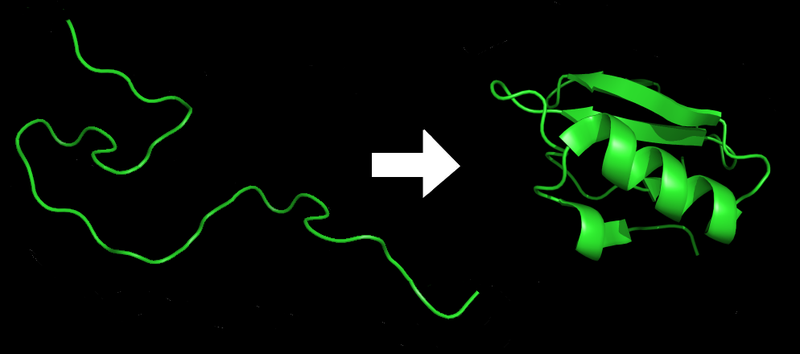From the Weizmann Institute of Science, via Science Blogs (November 14, 2011): A protein could take one of several paths through its folding landscape:
The team identified six different intermediate configurations for the protein they studied. Sometimes the strands went through all of them; other times, they took an easier, shorter route to their final form.
Why would a molecule go through extra contortions to get to the same state? The findings contain a clue: The process became longer and more tortuous in the presence of some external factors such as heat or higher concentrations of certain chemicals in the protein’s environment.
Like much good research, this study raises more questions than it answers: Is this a general rule that holds for different types of proteins? What advantages do the different routes to protein structure confer? How this might tie into such disorders as Alzheimer’s disease, in which badly-folded proteins form plaques in brain tissue?
